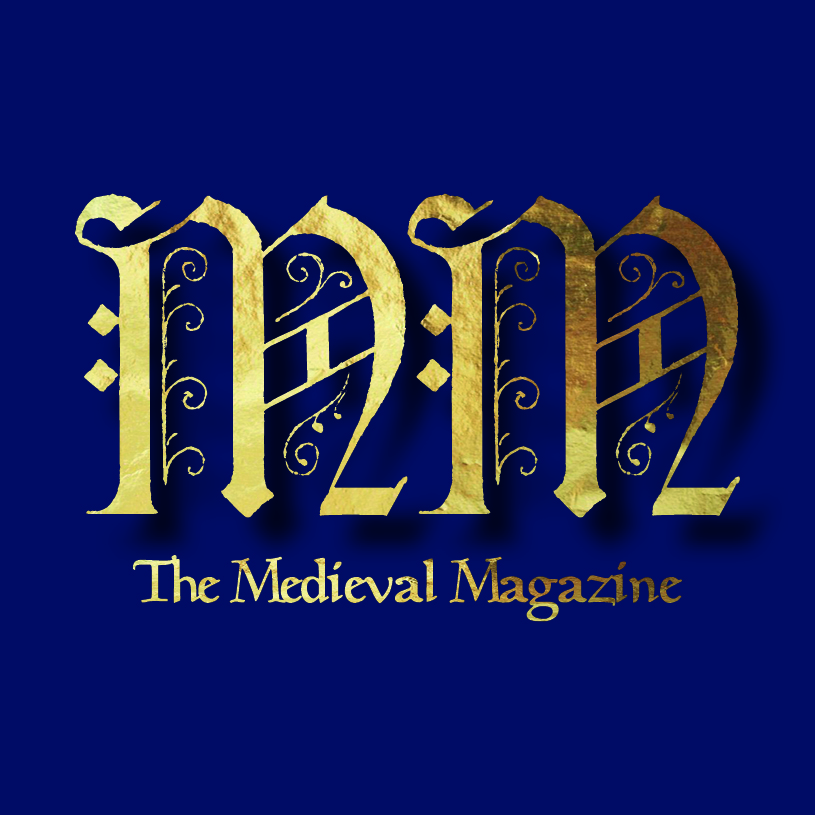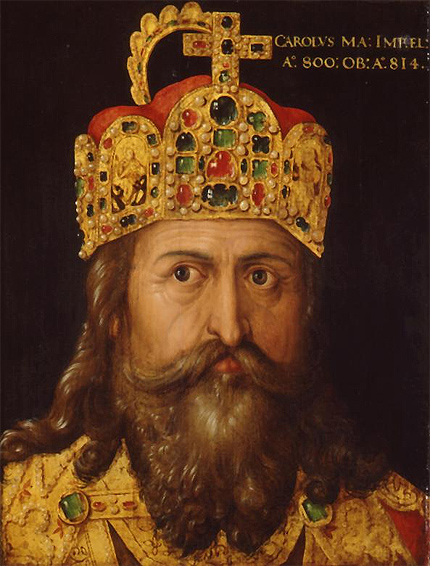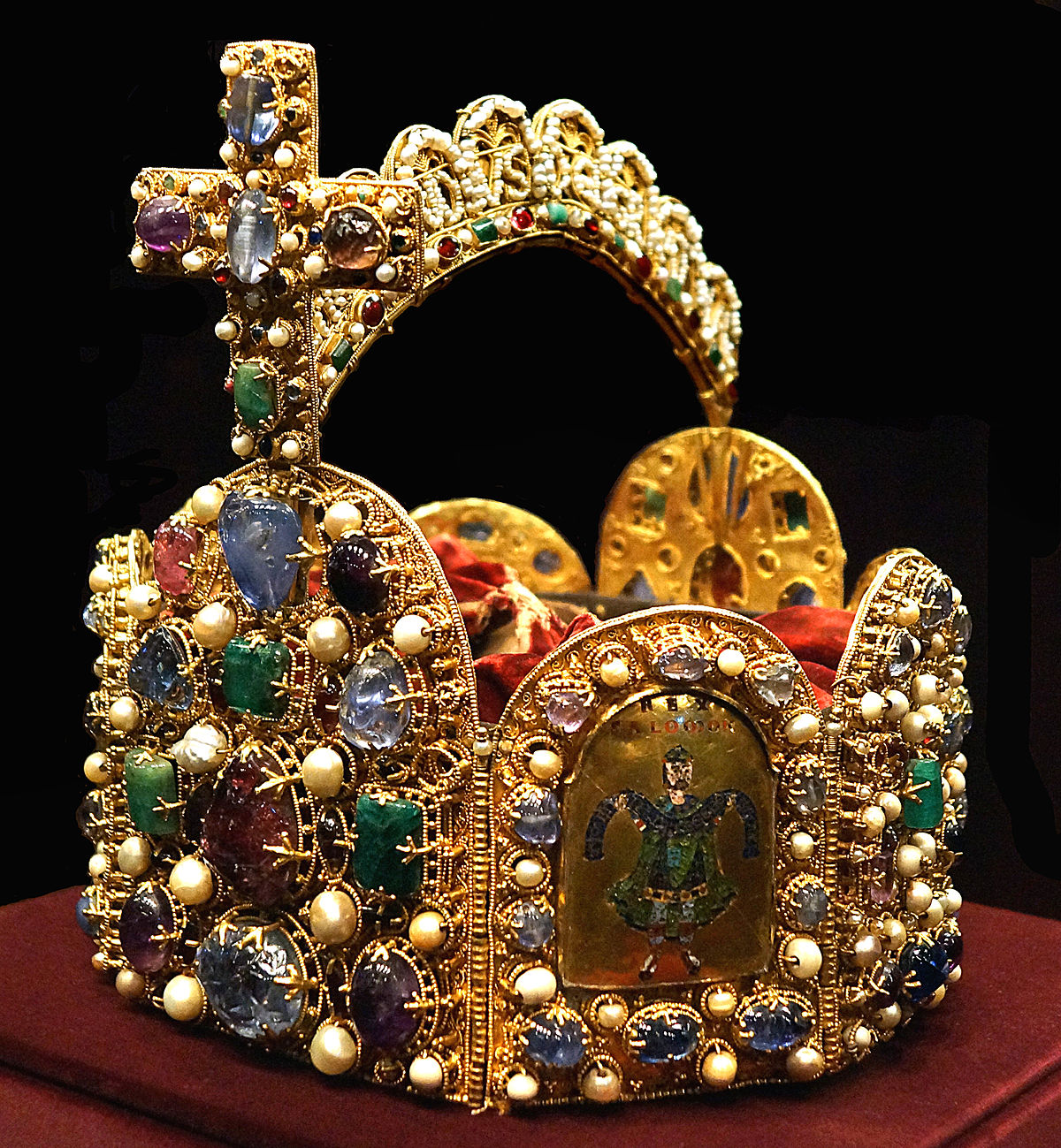Diet, prejudice, and non-verbal communication: Liutprand of Cremona‘s embassy to Constantinople by Andrea Maraschi
On the 4th of June, 968, Liutprand of Cremona made landfall at Constantinople as ambassador for the German emperor Otto I. His official mission: the arrangement of a nuptial alliance with the basileùs Nicephorus II Phocas. His unofficial mission: the draft of a report on the political framework and the military efficiency of the Byzantine Empire.
The relationship between the parties in question was unstable, to say the least: the Byzantine Empire did not acknowledge the legitimacy of the imperial title in the West. The duke of Saxony, Otto, had been crowned emperor in Rome in 962 by Pope John XII, but the Byzantine emperors maintained that the only legitimate successor to the Caesars lived in Constantinople. The western emperors would constantly try to justify their title, not unlike the rulers of the Romano-Barbarian kingdoms had tried to do a few centuries earlier by connecting the origins of their people to ancient heroes. It was not merely a matter of rhetoric: authority was to be supported by blood and lineage for, as the Romans used to say, people are more glad to be ruled by someone of high birth or by one who is destined for leadership.
Therefore, the premises of Liutprand’s mission were, all in all, quite problematic. Otto I recognized Nicephorus II Phocas as a legitimate emperor...but not vice versa. To the Byzantine emperor, Otto was a rega (king), not a basileùs (emperor). Thanks to Liutprand’s sharp (and biased) report, we have the chance to peer into the cultural prejudices which characterized the relationship between the eastern and the western hemispheres of Europe. Most interestingly, many of such prejudices take shape in the banqueting hall, where two different food cultures meet at table.
The Bishop of Cremona Liutprand was a member of a Lombard aristocratic family, and was one of the most important political figures in the Holy Roman Empire. In spite of the label “Roman”, though, Otto’s empire was not Roman at all, at least from the perspective of certain cultural markers.
It was already clear from Charlemagne’s times, indeed, that a number of traditional Germanic stereotypical attributes of power were particularly important to the western emperors. Among others, Charlemagne’s biographer Einhard suggests, physical strength and stature. These qualities, in turn, were connected with a specific diet, mainly based on meat (preferably roasted large game). Doctors would not necessarily agree with them but, at least from a formal standpoint, Germanic emperors used to have very different food habits than Byzantine emperors. The latter, indeed, were still sticking with typically Roman traditions, such as those which we can find in the Pseudo-Apicius’ De re coquinaria. In the Byzantine world, meat did not play an important function as identity marker: other products, such as vegetables, olive oil, wine, and garum were definitely more characteristic.
In his Relatio de legatione Constantinopolitana, Liutprand harshly criticized the unfair shake he and his retinue received from Nicephorus. More than anything else, Liuprand disliked Nicephorus. “He is a monstrosity of a man, a dwarf, fat-headed and with tiny mole’s eyes”, he reports, in a not-so-politically-correct vein. Clearly, the Byzantine emperor is described as being the exact contrary of how an actual Germanic emperor was meant to look, from a physical point of view. Short, fat, dark-skinned. Not a strong warrior but – coincidentally – “a fox by nature, in perjury and falsehood a Ulysses”. Needless to say, Nicephorus’ physical attributes would be soon connected with his Mediterranean diet: so different from the Germanic one, which made tall, strong and just emperors!
The cultural clash of the western and eastern hemispheres continues in the banqueting hall. Liutprand’s companions were not allowed inside, while he was was not properly honoured either: “As he [Nicephorus] did not think me worthy to be placed above any of his nobles, I sat fifteenth from him and without a tablecloth.” Clearly, the Byzantine emperor did not consider Otto’s ambassador to deserve a better place: a typical example of non-verbal, universal communication.
Things got worse when food was served on the table. The meal “was fairly foul and disgusting, washed down with oil after the fashion of drunkards and moistened also with an exceedingly bad fish liquor”. Liutprand, on the other hand, belonged to a world where oil was usually replaced by animal fats (butter, lard), and where garum was anything but popular. A world which enjoyed drinking beer, not surely the undrinkable (impotabile) wine of Nicephrous’. In fact, this tasted of pitch, resin and gypsum. The peculiar taste was obtained by coating the insides of amphoras with resin, in order to prevent air from seeping through their walls (not unlike today’s Retsina).
“You are not Romans”, Nicephorus claimed, “but Lombards”. In some sense, he was right. “Lombards” (that is, those living in the Holy Roman Empire) did not recognize themselves in typically Roman foodways. They did not like to drown their dishes in oil (oleo debuta); they were not accustomed to the taste of garum; they did not use Mediterranean condiments such as onion and garlic. Constantinople echoed the classical Mediterranean food culture, while Liutprand sided with the continental, Germanic one: the former was based on agriculture and the Mediterranean triad (bread, wine, oil), the latter was the culture of hunting and cattle breeding, where game, cheese, milk, eggs, lard and butter played a fundamental role.
Liutprand reports that, a few days later, he was “despised, rejected and scorned” on behalf of his emperor Otto, so much so that he decided to stand up and leave the table. Maybe aware of having crossed the line, Nicephorus thought it better to mollify the ambassador. “But the sacred emperor soothed my grief through a great gift, sending to me from among his most delicate dishes a fat goat, of which he himself had partaken”. The final details is particularly curious: it was no dish for ordinary people. Unfortunately, Liutprand’s palate was not pleased. The goat, indeed, was “deliciously [!] stuffed with garlic, onions and leeks; steeped in fish sauce: a dish which I could have wished just then to be upon your [Otto’s] table, so that you who do not believe the delicacies of the sacred emperor to be desirable, should at length become believers at this sight!”
His tone is clearly sarcastic. A “Lombard” would have never wasted the taste of meat by adding typical Mediterranean flavours such as those. Yet, the Byzantine chef was following Pseudo-Apicius’ tradition: in De re coquinaria, for instance, it is suggested to season pork with oil, garum, wine, water, leeks and coriander, and to add other spices such as pepper, cumin, oregano and celery. We are not sure whether Nicephorus did want to please Liutprand: what is sure, though, is that Liutprand of Cremona was not a fan of Apicius.
Byzantine Emp. Nicephorus II Phocas. Histamenon nomisma ca. 963-969
Source: http://www.icollector.com/
As previously noted, according to Germanic tradition, the more one eats (especially meat), the stronger he will be. Legend has it that, when Charlemagne defeated the Lombard King Desiderius in Pavia in 774, the Lombard prince Adelchi slipped incognito among the guests of a banquet in Charlemagne’s hall. His intention was to make his presence known by means of non-verbal language. Thus, he consumed a huge quantity of meat, broke the animals’ bones, sucked out the marrow and threw them under the table; then, he asked that the bones of his tablemates be brought to him, and similarly he broke them, sucked the marrow and threw them on the pile under the table. Eventually, he left the hall. When Charlemagne saw the bones, he immediately understood the non-verbal message: it must have been the work of a “famished lion”, a great eater and, consequently, a formidable warrior “who broke all these deer, bear, and ox bones like someone else would have broken stalks of hemp”. “It must have been Adelchi”, he concluded.
According to this idea, physical power and stamina were strictly connected with the amount of food (roasted, large game) eaten, and the stereotypical image of the leader was that of the man who could eat more than anybody else, because that also implied he was the strongest warrior on the battlefield. Greek and Roman tradition was based on the opposite idea. In a letter to Parmenion, Alexander the Great wrote that he was absolutely moderate with food: for lunch he used to march, and for dinner he generally ate sparingly.
Not surprisingly, Liutprand describes Otto I as numquam parcus (in other words, “big eater”) and a meat lover, where as Nicephous is parcus (lacking appetite) and greedy of vegetables, as well as short, ugly, swarthy and sly. To Liutprand’s eyes, Nicephorus embodied the cliché of the southern man whose military success was due to cunning and cowardliness rather than strength and courage. Foodways had deeper moral foundations, by the way. Liutprand, indeed, claimed that the Greeks did not eat meat because they were avid and preferred selling cattle in order to make money, rather than consuming it; this is why they usually ate garlic, onion and leeks. As a consequence, meat consumption was positively connoted in Christian terms as well, from the Bishop’s standpoint.
The comparison between the figures of Otto and Nicephorus is then based on ethnic and cultural preconceptions which were rooted in the traditional dichotomy romanitas/barbaritas. Liutprand’s mission was accomplished, and in 972 Otto II married the Byzantine princess Theophanou; nonetheless, cultural prejudices between the East and the West would be harder to quell.
This article was originally featured in Issue 108 in April 2018.
If you like this and want more, subscribe below!
About the Author
Andrea Maraschi holds a BA degree in Modern Humanities (2008), an MA degree in Medieval History (2010), and a Ph.D. in History from the University of Bologna (2013). From 2014 to 2017 he has been a postdoctoral fellow at the University of Iceland. He has taught courses on Food history in the Middle Ages and Anthropology of Food, and he has published on many aspects connected with food in medieval times such as banqueting, religious symbolism, and magic practice.






